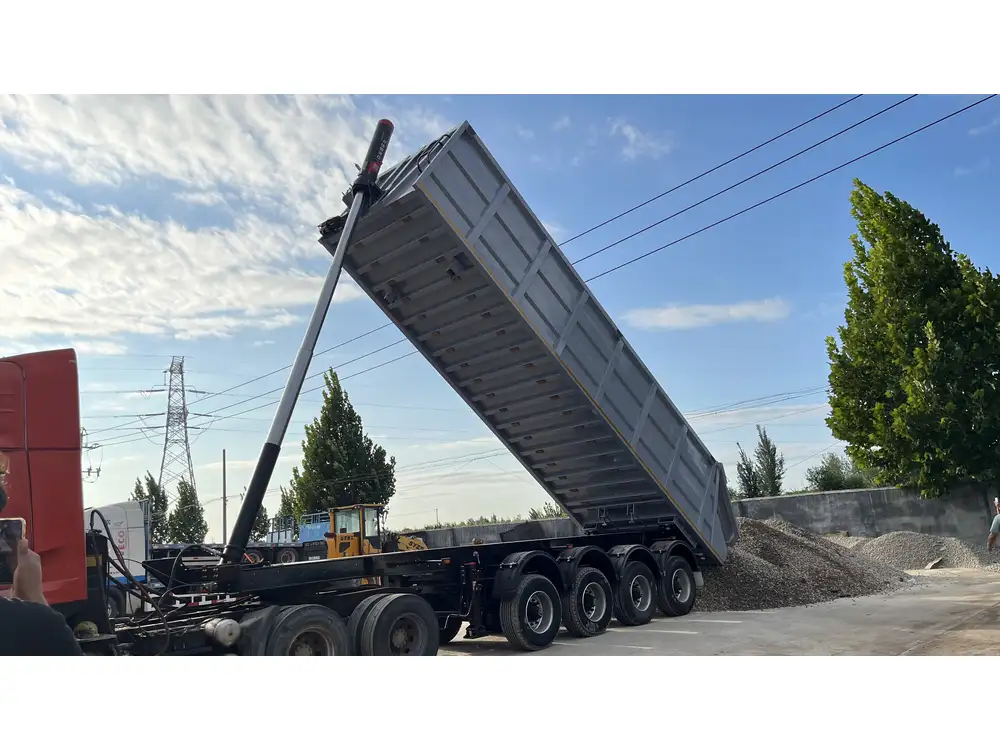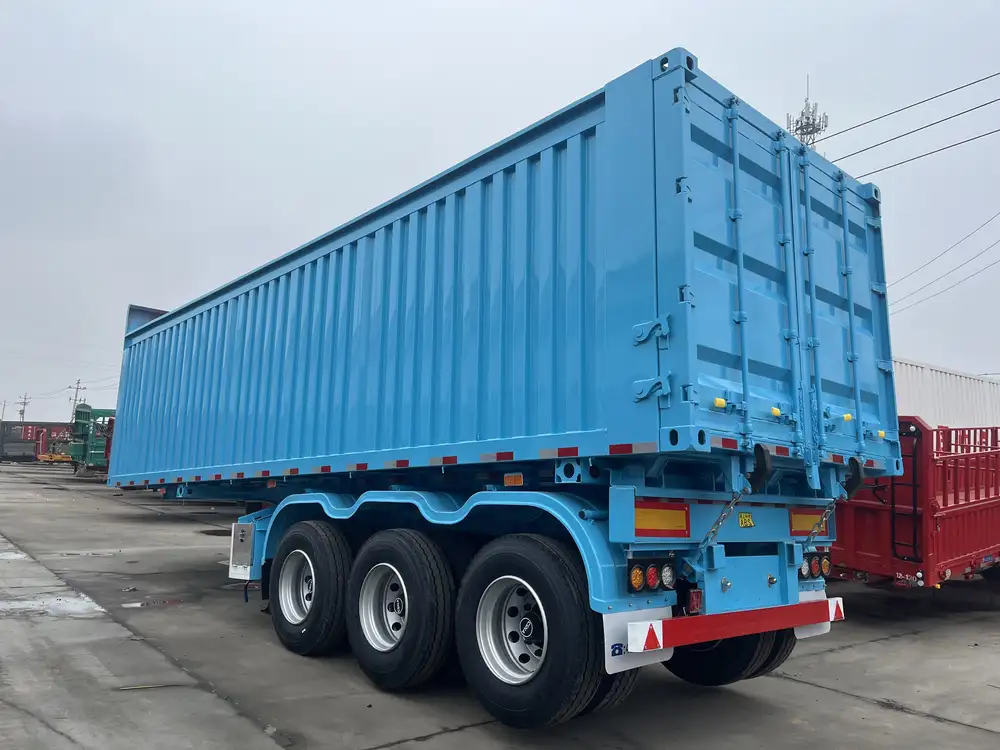Semi-trailer brakes play a critical role in ensuring the safety and efficiency of heavy-duty trucking operations. However, issues with brake release can lead to problematic situations, ranging from reduced vehicle performance to catastrophic failures. Understanding why semi-trailer brakes might quit releasing is vital for operators, fleet managers, and manufacturers alike. In this article, we dissect various factors that can lead to brake malfunctions, provide solutions to mitigate these issues, and offer guidelines for regular maintenance protocols.
Understanding the Brake System: A Look into Mechanics
To comprehend why brakes might fail to release, it is essential to start with an overview of the brake system mechanics. Most semi-trailers utilize a combination of air brake systems, actuators, and pneumatic components that work robustly yet intricately. Below, we outline the fundamental components involved in the braking system:
| Component | Description |
|---|---|
| Air Compressor | Produces compressed air for activation of air brakes. |
| Brake Chambers | Convert air pressure into mechanical force applied to brakes. |
| Slack Adjusters | Auto-adjust brakes for wear and maintain proper distance. |
| Brake Pads and Drums | Friction components that engage to slow or stop vehicles. |
| Pneumatic Hoses | Transport compressed air throughout the system. |
Common Causes for Brake Release Issues
Though the brake system is designed for hard-hitting performance, several common issues can impede its functionality. Let’s dive into the specifics to unveil what might cause brakes to quit releasing effectively.

1. Air Pressure Problems
The heart of any air brake system is air pressure. Insufficient air pressure due to a faulty air compressor, leaks in the system, or improper charging mechanisms can lead to subpar brake performance.
- Symptoms:
- Brake lag or slow engagement
- Unresponsive brakes
- Solutions:
- Inspect the air compressor for proper operation.
- Check for leaks in hoses and connections.
- Ensure that the air tank is adequately charged.
2. Contaminated Air Supply
Moisture, dirt, or oil in the air lines can lead to caked brake components or sticky valves, preventing brakes from releasing properly.
- Symptoms:
- Brakes feel “spongy” or unresponsive.
- Solutions:
- Regularly drain moisture from air tanks.
- Use air filters to purify the air supply.
3. Faulty Brake Chambers
Brake chambers convert air pressure into mechanical force and are vital for brake activation. A malfunctioning chamber may provide an unequal application of force.
- Symptoms:
- Uneven braking; one side of the trailer may drag.
- Solutions:
- Inspect brake chambers for wear and damage.
- Replace any faulty components to restore balance.

4. Slack Adjuster Malfunction
Slack adjusters keep brake shoes in the correct position for optimal performance. If an adjuster fails, it could lead to a situation where brakes cannot disengage fully.
- Symptoms:
- Abnormal wear marks on brake shoes.
- Visual misalignment between components.
- Solutions:
- Perform periodic inspections and adjust as necessary.
- Replace slack adjusters showing signs of excessive wear.
5. Mechanical Obstructions
Over time, debris can build up around braking components, leading to jamming or hindered movement. Moreover, rust and corrosion can inhibit the operational efficiency of parts.
- Symptoms:
- Strange noises when brakes are applied.
- Difficulty in brake engagement and release.
- Solutions:
- Routinely clean and inspect braking mechanisms.
- Treat metal components to prevent rust and damage.
Diagnosing the Issue: A Systematic Approach
When encountering brake release issues, a structured diagnostic procedure can clarify the root cause:
Visual Inspection:
Examine the brake system for visible damage, leaks, and obstructions.Air Pressure Check:
Measure the air pressure levels using a gauge to ensure they fall within manufacturer specifications.Brake Function Test:
Conduct a test drive to evaluate brake responsiveness under different load conditions.Professional Evaluation:
If issues persist, consult with certified technicians for in-depth diagnostics and repair.

Preventive Maintenance: Best Practices for Extending Brake Lifespan
Regular maintenance of semi-trailer brake systems can prevent many issues that lead to release failures. Here are best practices to ensure long-term reliability:
Establish a Regular Inspection Schedule
| Frequency | Inspection Type |
|---|---|
| Daily | Visual checks, tire pressure, and air pressure readings. |
| Weekly | Comprehensive checks on brake pads, drums, and slack adjusters. |
| Monthly | Detailed air system inspection, including components and filters. |
| Quarterly | Replace air dryer cartridges and clean or replace air filters. |
Proper Brake Adjustment Techniques
The importance of keeping brakes properly adjusted can’t be overstated. Adhere to these adjustment techniques:
- Ensure proper clearance between brake pads and drums.
- Adjustment must be performed when brakes are cool to prevent misalignment from thermal expansion.
- Use the manufacturer’s specifications for optimal performance.

Record Keeping and Tracking
Maintaining a detailed log of all service and repair records for each semi-trailer enhances transparency in operations:
- Document all inspections, adjustments, and replacement components.
- Track mileage between services to predict future maintenance needs effectively.
Addressing Unique Circumstances: Special Considerations
In addition to routine issues, unique scenarios can present challenges in the release of semi-trailer brakes. Below are considerations to keep in mind:
1. Heavy Loads and Dynamic Braking
Trucking heavy loads can intensify stress on braking systems, leading to quicker deterioration and potential failure points. Adjust operational practices during peak loads.

2. Environmental Factors
Extreme weather conditions, such as rain, snow, or ice, can affect brake performance. Adapt maintenance and inspection schedules according to seasonal weather patterns.
3. Age of Components
Older components may be more prone to failure. It’s crucial to evaluate the age and condition of brake parts regularly to prevent unexpected breakdowns.
4. Technology Integration
Modern innovations such as anti-lock braking systems (ABS) and electronic braking systems (EBS) can drastically improve performance and safety. Investment in vehicle technology may mitigate issues related to brake release.

Conclusion: Ensuring Safe and Efficient Brake Operation
The proper functionality of semi-trailer brakes is pivotal for safety, efficiency, and operation in heavy-duty transportation. By recognizing the multifaceted factors that contribute to brake release issues and employing preventive measures, stakeholders can enhance performance and operational reliability.
Ultimately, vigilance and proactive maintenance are key components for ensuring that semi-trailer brakes do not quit releasing, thereby preventing costly downtime and the risk of accidents. With thorough inspections, adjustments, and a commitment to best practices, we can safeguard the integrity of our braking systems, ensuring they operate seamlessly on the road ahead.



